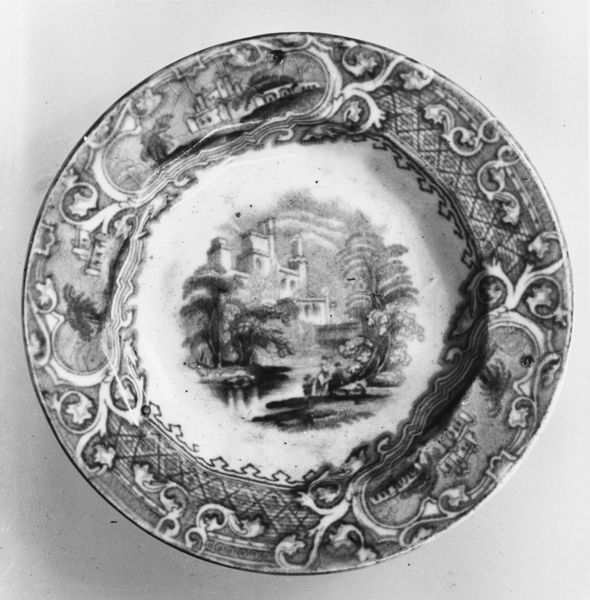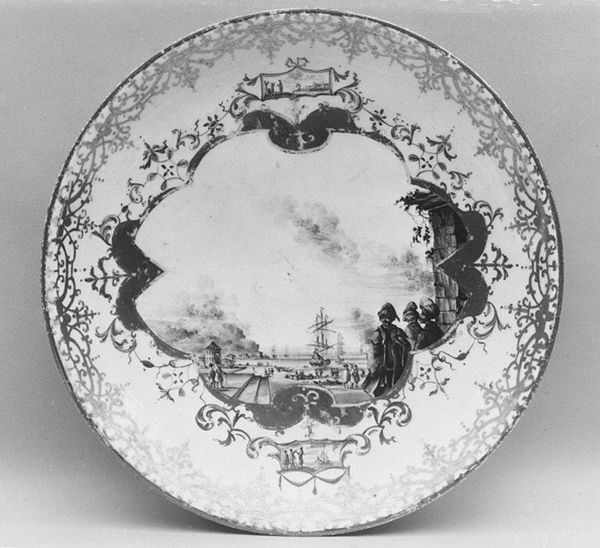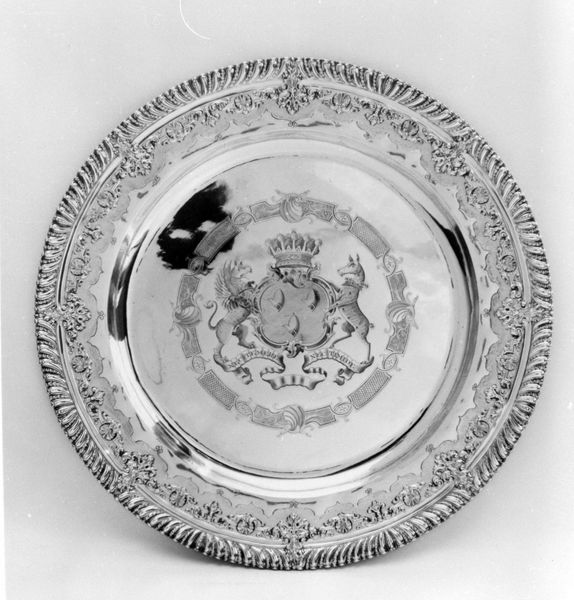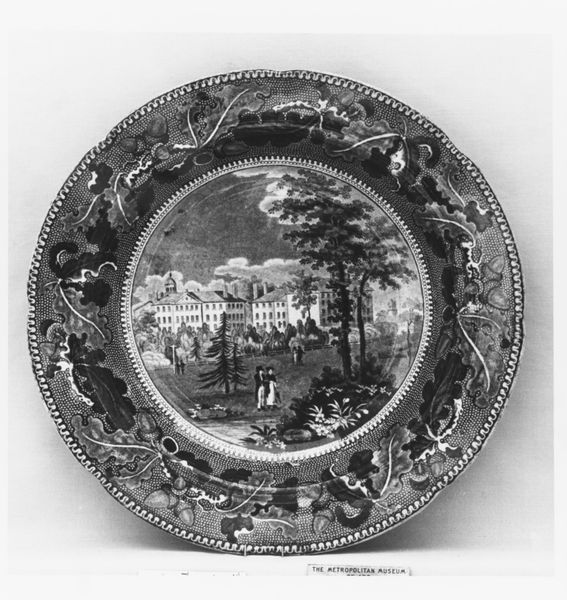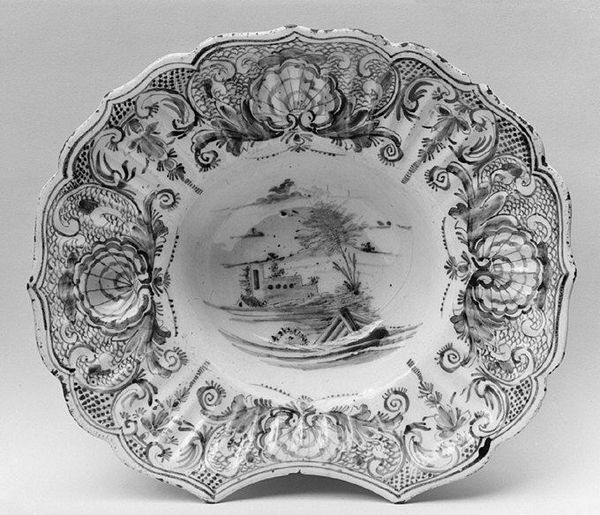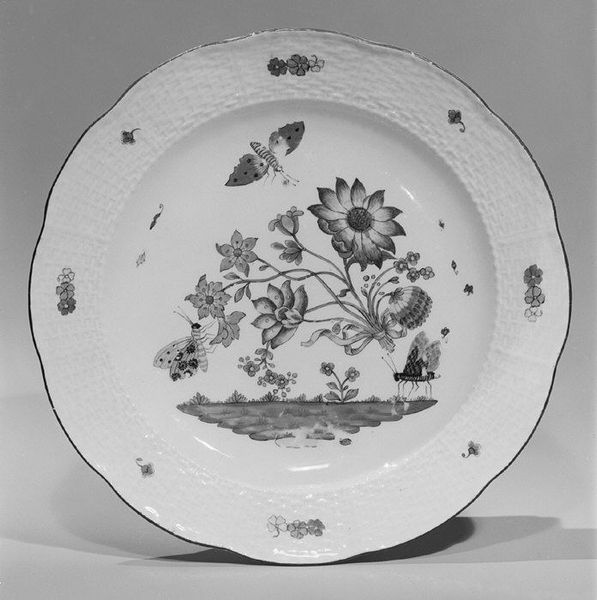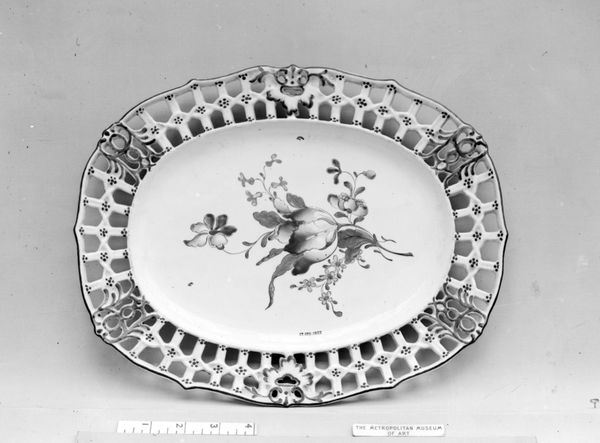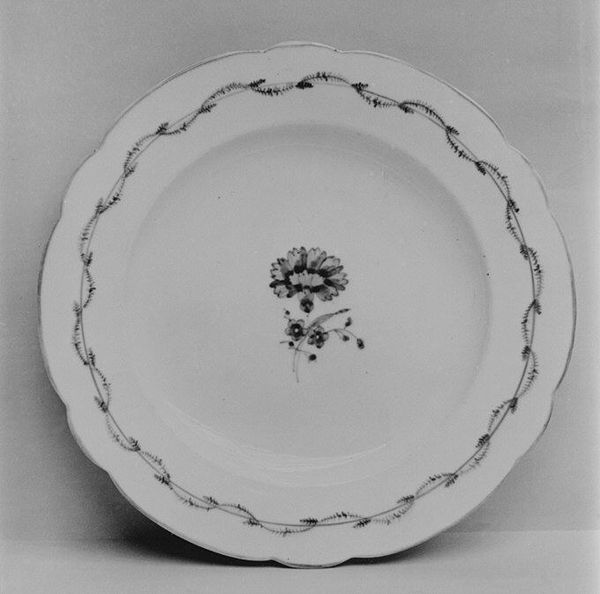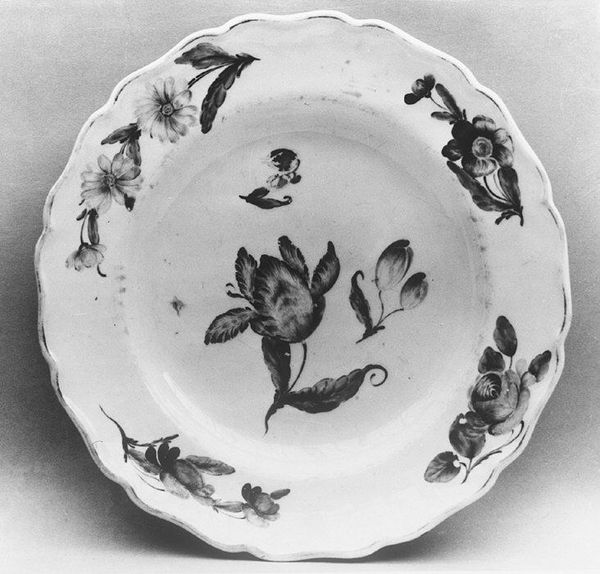
print, ceramic
# print
#
landscape
#
ceramic
#
black and white theme
#
stoneware
#
england
Dimensions: Diam. 4 in. (10.2 cm)
Copyright: Public Domain
This cup plate was made by William Adams & Sons, using earthenware with transfer printing, a popular technique in the 19th century. The process involved engraving a design on a copper plate, inking it, and then transferring the image onto the ceramic surface using tissue paper. The monochrome decoration is typical of transferware, where the aesthetic effect relies on precision engraving and careful application. Notice the intricate detail, achieved through mechanized production and the division of labor inherent in factory settings. Despite the industrial process, the cup plate reflects the romantic sensibilities of the era, depicting an idealized scene of rural life. This mass-produced item democratized access to decorative arts, making them available to a broader audience. By understanding the materials and production methods, we can see how this cup plate bridges the gap between industrial manufacturing, artistic design, and social consumption.
Comments
No comments
Be the first to comment and join the conversation on the ultimate creative platform.
